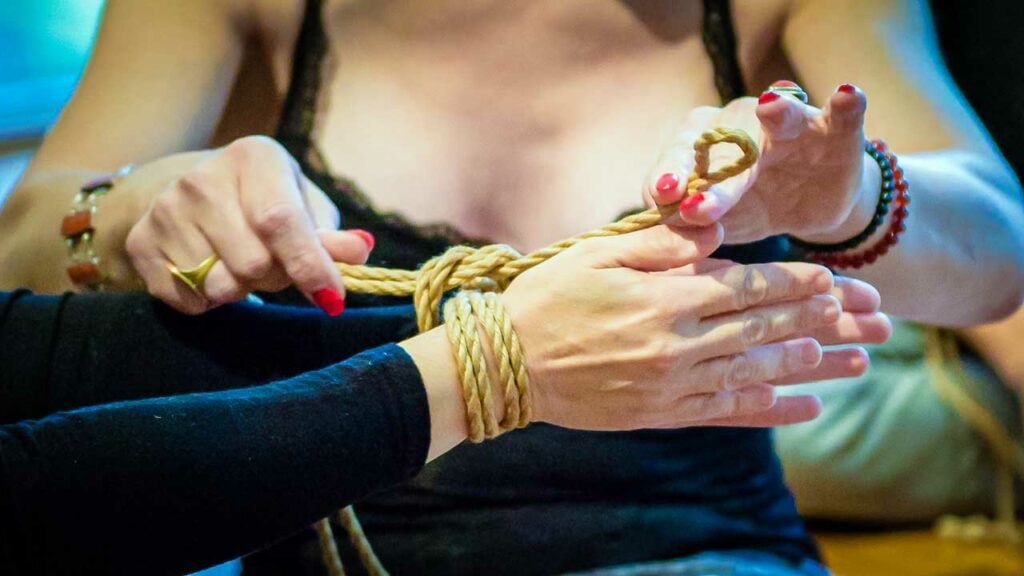Double Column Tie Shibari
The double column tie in shibari is a fundamental technical base in the art of shibari. The Double Column, is the equivalent of the Single Column for two points of attachment or columns (usually wrists or ankles) together in a secure and comfortable manner. Learning how to perform Double Column safely is crucial to establishing a solid foundation in this sensual, artistic practice. Every shibari session requires mastery of the involve knots. Confidence in the safety of the knots is paramount, ensuring a safe and positive experience for all parties.

Reason for the Double column Tie Shibari
The main reason for the double column is to ensure the safety and comfort of the model, as well as to enable the person tying to effectively control the movement and position of the model. Here are some key points on the reason for and importance of the double column in shibari:
- Safety: Tying the columns together reduces the risk of injury by preventing the ropes from tightening too much around a single column. This distributes pressure over a larger surface area, reducing pressure points and the risk of nerve compression or restricted blood circulation.
- Comfort: The double column tie distributes tension evenly over both columns, making the experience more comfortable for the model. This avoids the unpleasant sensations of tingling, numbness or pain that could occur if tension were poorly distributed.
- Control: By attaching the two columns together, the practitioner can more easily control the model’s movements by limiting his or her ability to move the attached limbs independently. This can be particularly important in certain poses or scenes where precise control is required.
- Aesthetics: The double column can also contribute to the overall aesthetics of the shibari session by creating symmetrical patterns or adding an interesting visual dimension to the artistic composition.
Video reminder
The Double Column Tie Shibari technique should not be underestimated. The quality of the knots and the way in which they distribute tension over two attachment points are essential to ensure the model’s comfort and safety. Even experienced artists regularly practice this technique, perfecting it as a musician would practice his scales. This constant practice reinforces mastery and familiarity with each knot, enabling you to ensure the model’s safety and explore more advanced techniques with confidence.
In the early stages of learning shibari, concentrating on the basics, including the Double Column, is essential. Understanding the fundamental principles of this technique and becoming familiar with the different variations are essential steps. An experienced mentor is an invaluable resource for guiding and correcting movements. Isolated practice of each Double Column knot before combining them in more complex sequences is recommended.
Safety
Safety isn’t just about knots. It also involves constant communication with the partner. Establishing clear signals to indicate partners’ comfort and tolerance levels is essential. Particular attention to the tied person’s physical and emotional reactions, and adapting one’s practice accordingly, is necessary.
In short, learning to practice Double Column safely relies on understanding the basics, regular practice and open communication with your partner. This creates an environment of trust conducive to safe sensual exploration.
